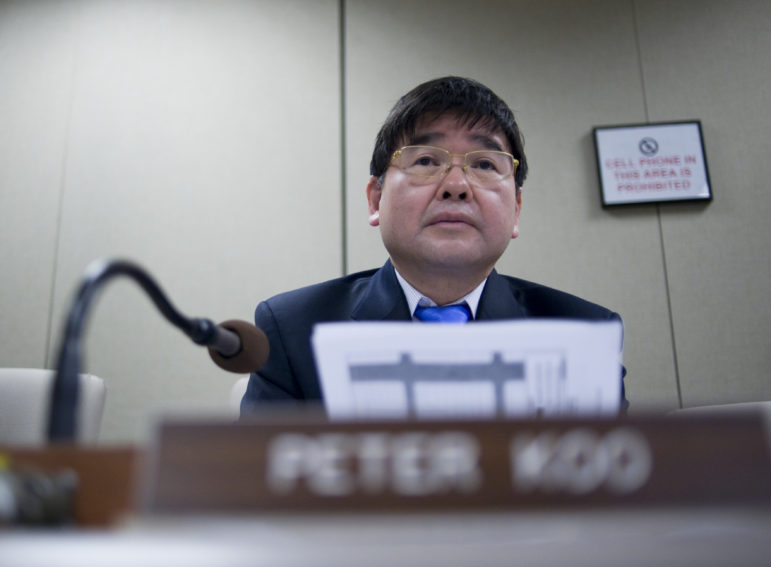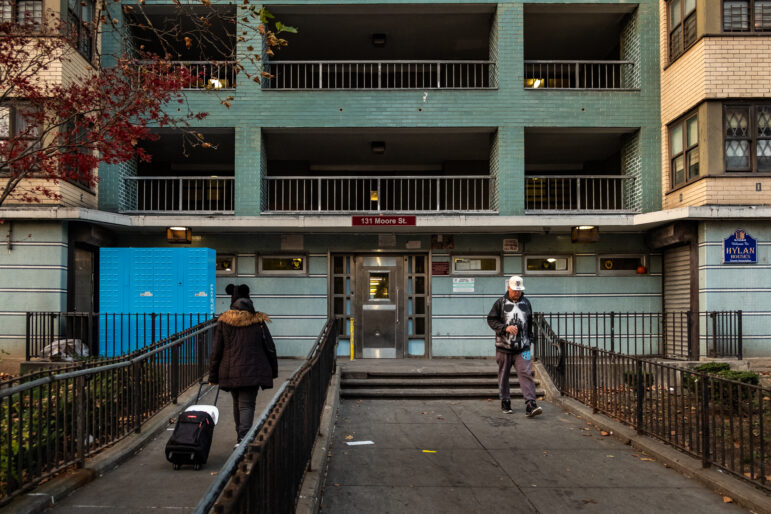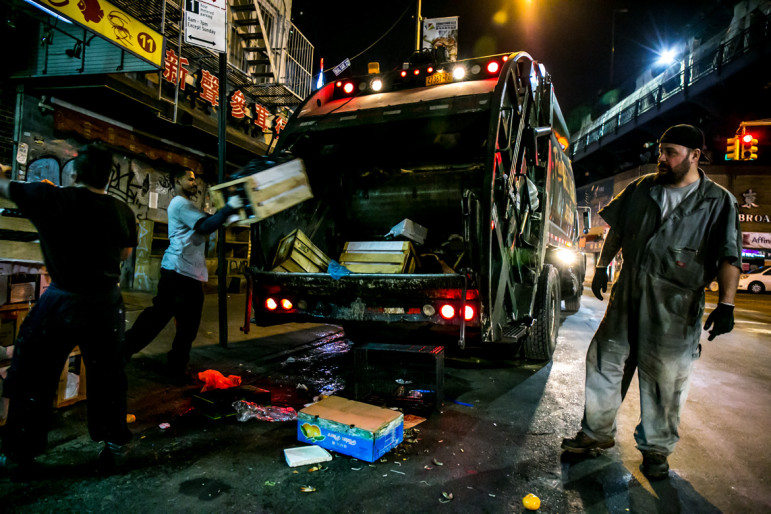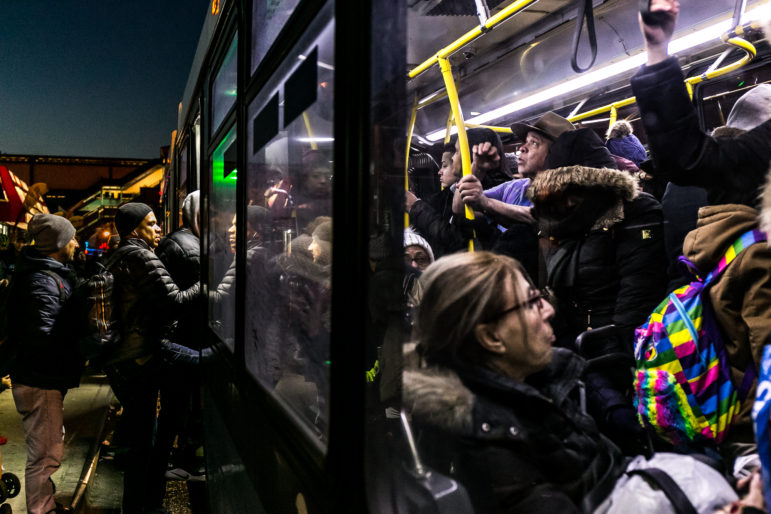
William Alatriste/City Council
Councilman Peter Koo raised concerns about the rezoning plan that, it turns out, the de Blasio administration shared.
The Department of City Planning (DCP) has shelved—but not abandoned, the agency insists—its plans to rezone Flushing West, one of the 15 neighborhoods the city had targeted as part of its plan to build or preserve 200,000 units of affordable housing.
Community residents in the Flushing Rezoning Community Alliance (FRCA) say they have mixed emotions about the suspension of the plan: They are glad their concerns have been heard, but fear they will now lose the much-toted benefits that were part of the initiative, including affordable housing and investments in neighborhood infrastructure. City officials, however, told City Limits that not all these benefits will be lost.
The city’s proposal to rezone 11 blocks between downtown Flushing and Flushing Creek would have produced an estimated 3,316 new apartments, including about 515 to 619 affordable units. The plan also included investments from multiple city agencies in streetscaping, traffic improvements, waterfront access, free legal services for tenants, and resources to promote small business development and employment, among other benefits.
From the beginning, however, the location presented unique technical challenges. State Senator Avella Tony Avella and Assembly Member Ron Kim announced their opposition to the plan in February and March, citing existing transit congestion, the limits of mandatory inclusionary housing to provide deeply affordable units and the need for the city to make greater progress on addressing pollution in Flushing Creek. Members of FRCA, who feared that the plan in its current form would usher in a wave of luxury development without sufficient protections against displacement, offered their own set of recommendations for the plan in April.
These various concerns reached the ears of Councilmember Peter Koo, who last Friday wrote to DCP requesting that the city withdraw the plan until such issues could be addressed. He mentioned the same concerns as Avella and Kim, noted that schools were already overcrowded, and said that small businesses owners feared the rezoning would detract from business in downtown Flushing. In addition, he said that because potential building height limits would be limited by the area’s proximity to LaGuardia airport and high water table, developers had told him that the upzoning, which would impose mandatory inclusionary housing requirements, would in fact hamper development.
“With so many infrastructure and planning needs, it has become clear that a rezoning of Flushing West would be a classic example of stuffing 10 pounds of potatoes into a five pound bag. We simply can’t afford to further overburden our community without first addressing serious sustainability and capacity concerns,” Koo wrote.
In a letter that same day, Weisbrod said he agreed with many of Koo’s concerns. The agency is particularly hampered by issues involving the creek’s pollution and the limitations on building height limits and wants more time to study those problems.
“In the meantime, we will turn our attention and our priority to planning efforts in other neighborhoods,” Weisbrod wrote.
In a statement, FRCA said they were glad Koo had heard some of their fears, but were concerned the area would now continue to develop without mandatory inclusionary housing requirements. (The rezoning area, currently zoned for manufacturing and commercial uses with limited residential uses also permitted, has seen an influx of malls, hotels, offices, and condos in recent years.)
“This means that in a neighborhood where more than 70 percent of residents reported housing instability, Flushing tenants will still not receive the affordable units they need,” FRCA wrote. “The action to stop the rezoning by Councilmember Koo, the administration and the Department of City Planning, without first finding workable alternatives to build low and moderate income housing, further aggravates the affordable housing crisis.”
The group urged the city to, in the absence of a rezoning, invest in deeply affordable housing on public sites, including nearby Municipal Lot #2 and by the Flushing Airport. It added that the city should still upgrade local infrastructure and pursue anti-displacement strategies such as the creation of a certificate of no harassment, the provision of a right to counsel in multiple languages in housing court, and the dedication of subsidies to preserve and develop affordable units on privately owned sites.
Emily Goldstein, senior campaign organizer at the Association for Housing and Neighborhood Development, urged the city to take those steps anyway. “There’s nothing saying you have to rezone in order to put in place a robust preservation plan,” she says.
While it’s true that without a rezoning there can be no units created through mandatory inclusionary housing, City Hall stressed to City Limits that the administration would still pursue improvements for the neighborhood with or without an immediate rezoning.
“Even though we are pausing the rezoning process, we will continue to invest in Flushing’s revitalization in numerous ways, and our aggressive efforts to build and preserve affordable housing will continue in the neighborhood. Our on-the-ground legal services will continue there as well,” said Austin Finan, a spokesman for City Hall, in a statement.
Scott Sieber, a spokesperson for the Council member, said that Koo’s office would continue to offer free tenant legal services “for as long as there is demand” and that “just because Flushing West is not moving forward doesn’t mean anyone in our community should stop fighting for investment.”
In addition, while Koo has previously said that Municipal Lot #2 should remain a parking lot, Sieber noted progress in the ongoing development of 100 percent affordable housing and a community center at another nearby public lot, and said the city would continue to seek other locations for affordable housing.
DCP’s Flushing West proposal stemmed from a study conducted by the Flushing Willets Point Corona Local Development Corporation using a $1.5 million brownfield grant from the Department of State that aimed to create a plan for the revitalizing of the Flushing Creek waterfront. The LDC, whose membership includes a couple Flushing West property owners, says it still intends to explore ways to meet its goals, including waterfront access, as it reports back on the results of the grant.
“Although we are disappointed, the LDC will continue to fulfill its work for the New York State Department of State over the next 10 months to contribute to a roadmap that will include recommendations to improve public access to the waterfront and set the stage for sustainable development along it,” said Claire Shulman, former Queens Borough President and the founder of the group, in a statement.
Whatever lies in store for the future of Flushing west, members of FRCA believe the suspension of the rezoning shows that community members can impact the city’s decision to pursue a rezoning—though clearly many unique locational difficulties interfered as well.
“We believe that this decision does send an important message to other neighborhoods being faced with potential rezonings,” FRCA wrote. “This is a crucial testament to what can happen when a community responds and says no.”
Goldstein says it’s too difficult to draw generalizations about what would happen in other rezoning neighborhoods.
She adds, however, “I do think that it’s an important counterpoint to the sense that resistance is futile.”
City Limits’ coverage of housing policy is supported by the Charles H. Revson Foundation.









One thought on “City Says Flushing Rezoning is ‘Paused,’ Not Dead; Some Investments Still on Track”
Pingback: Past Rezonings Shape Long Island City’s Feelings About De Blasio Plan | City Limits